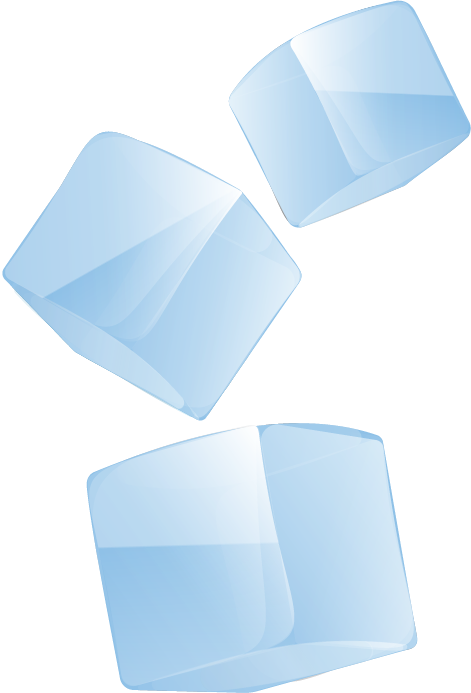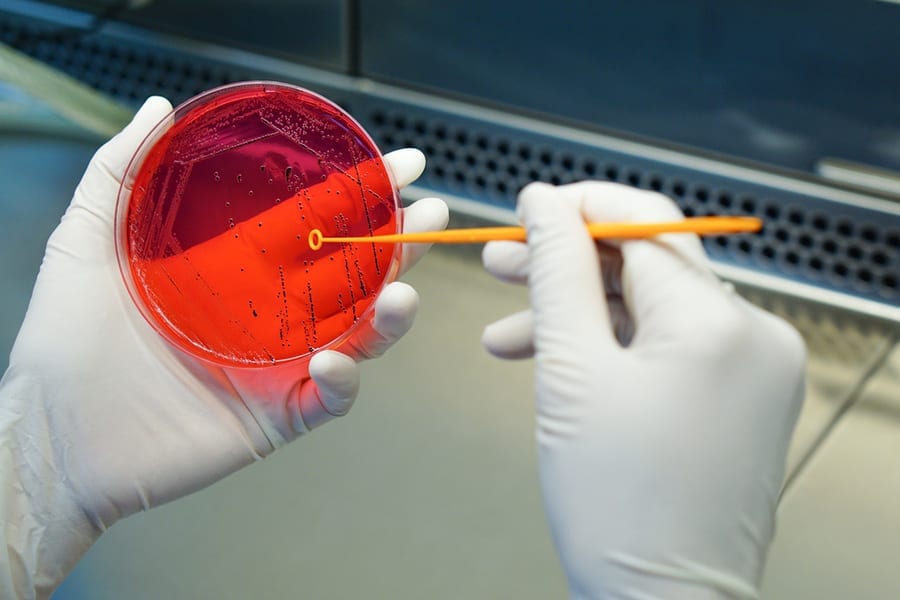The FDA defines ice as a food, but does it have the potential to spread foodborne illness the same way as a cut of steak would? Ice contamination is a real thing, and it can make customers very sick if you’re not following proper guidelines.
Let’s discuss the types of foodborne illnesses that can spread in an ice machine and how to protect your employees and customer base.
What Types of Germs can Live on Ice?
Ice doesn’t attract germs the same way food does. The surface of an ice cube is cold. It doesn’t have enough organic material for germs, such as bacteria and viruses, to grow. Still, ice can carry germs if they are introduced to the ice supply from a user or dirty utensils.
There are some very common germs in the food industry that can hitch a ride on an ice cube and end up making someone sick.

Tired of dealing with ice machine issues on your own?
Find out how Easy Ice makes them disappear.
Norovirus and E. coli are two foodborne illnesses that routinely plague the food industry. Both are commonly spread when food handlers don’t properly wash their hands before handling food. Especially after using the restroom.
Other diseases, such as Hepatitis A and Legionella, are far rarer. For example, Legionella is a waterborne pathogen that infects about 20,000 people a year worldwide. It grows in warmer water climates above 70 degrees and transmits through inhalation. While getting Legionella from an ice cube is very rare, it can happen. People have gotten sick from choking on an ice cube with Legionella in it.
How to Prevent Ice Contamination
The best way to prevent food contamination is a combination of proper ice handling procedures and routine cleaning and maintenance. Since people are the number one cause of ice contamination, proper hygiene and safe practices are key. Knowing how to clean your ice machine is helpful in eliminating any germs that may have been transmitted to the ice machine.
Ice Handling
Since ice contamination starts with the user, you need to make sure your employees are handling the ice properly.
First and foremost, employees should always wash their hands before handling ice, especially after using the restroom facilities. They should exhibit the same level of care with ice as they do with a cut of steak.
Secondly, employees should never retrieve ice with their hands or with drinkware. Hands touch all kinds of surfaces that can transmit disease. Drinkware is not designed to keep the hands safely away from the ice supply. If an employee uses a glass or cup to scoop ice, their hand has likely touched the surface - which can easily touch the ice supply.
All employees should use an ice scoop to grab ice for customers. Only the handle if the scoop should be touched. They should never touch the shovel part of the scoop with their hand.
Only Fresh Ice Belongs in Your Bin
Like the name suggests, an ice bin is for ice only.
Employees should never place cans or bottles in the ice bin to cool them down. Also, placing food in the ice bin is a huge no-no. Food can easily transfer foodborne illnesses to your ice supply.

Need help finding the right ice machine for your business?
Easy Ice has the right machine for you.
While using an ice scoop to serve ice is highly recommended, don’t store the scoop in the ice bin. While the shovel of an ice scoop may be sanitary, the handle is not. By storing the scoop in the bin, you run the risk that the ice will touch the handle, contaminating the whole supply.
Ice scoops should be stored in a clean container outside of the ice bin.
Finally, never throw unused ice back into the ice bin. If a server accidentally fills an extra glass with ice, they should toss that ice into a sink.
Keep Up with Cleaning and Maintenance
Even if your employees are well versed in safe ice handling practices, accidents do happen.
Routine use of ice maker cleaners in high-touch areas of the bin, such as bin door handles and ice scoops, can eliminate any germs that may have found their way onto the surface.
To prevent a dirty ice machine, you should clean the exterior of your ice machine and bin regularly following the manufacturer's guidelines. We've written a helpful guide for How to Clean your Ice Bin that your employees can follow.
Cleaning your ice scoops daily is also helpful in eliminating unwanted contaminants. Disinfect scoops using an EPA-approved disinfecting agent and rinse with hot water. You can even clean your ice scoop by running it in your commercial dishwasher along with your dishware.
Finally, ice machine manufacturers recommend getting at least two professional maintenance and cleaning visits a year from a qualified ice machine technician. Professionals can clean and disinfect many hard-to-reach components within your ice machine. Not only can they clean your ice machine from germs, mold, and scale, but routine maintenance also extends the life of your commercial ice equipment and prevents costly ice machine repairs.
For more information about ice machine cleaning, see How to Clean your Hoshizaki Ice Machine and How to Clean your Manitowoc Ice Machine guides.
Ice Contamination is Preventable
A combination of ice handling best practices and routine cleaning and maintenance can keep everyone in your business safe from ice contamination. Make sure to have regular safety meetings with your employees to make sure they’re following best practices. Working together with ice machine professionals can keep your ice supply clean and sanitary.

As the Co-Founder and COO of Easy Ice, John Mahlmeister has been working in the commercial ice machine industry since 2009. Co-headquartered in Phoenix, AZ and Marquette, MI, Easy Ice is the only national provider of full-service ice machine subscriptions in the industry. Since Easy Ice was founded, the number of ice machines under its management has grown to over 30,000 units across 47 states, with no signs of slowing down.

